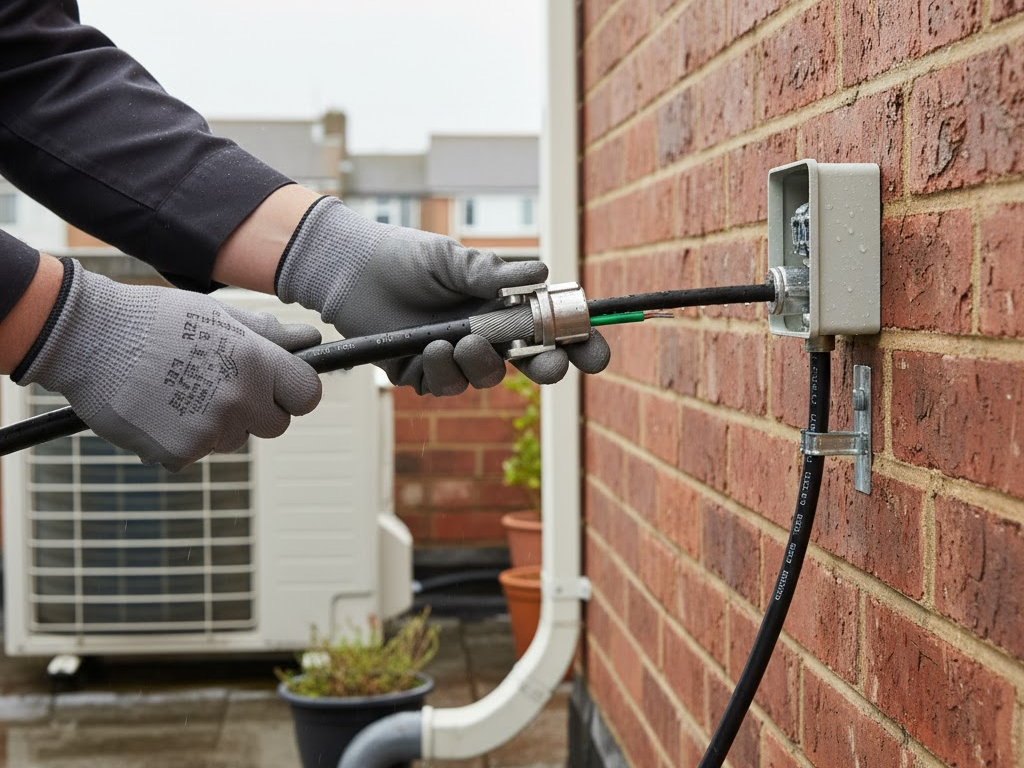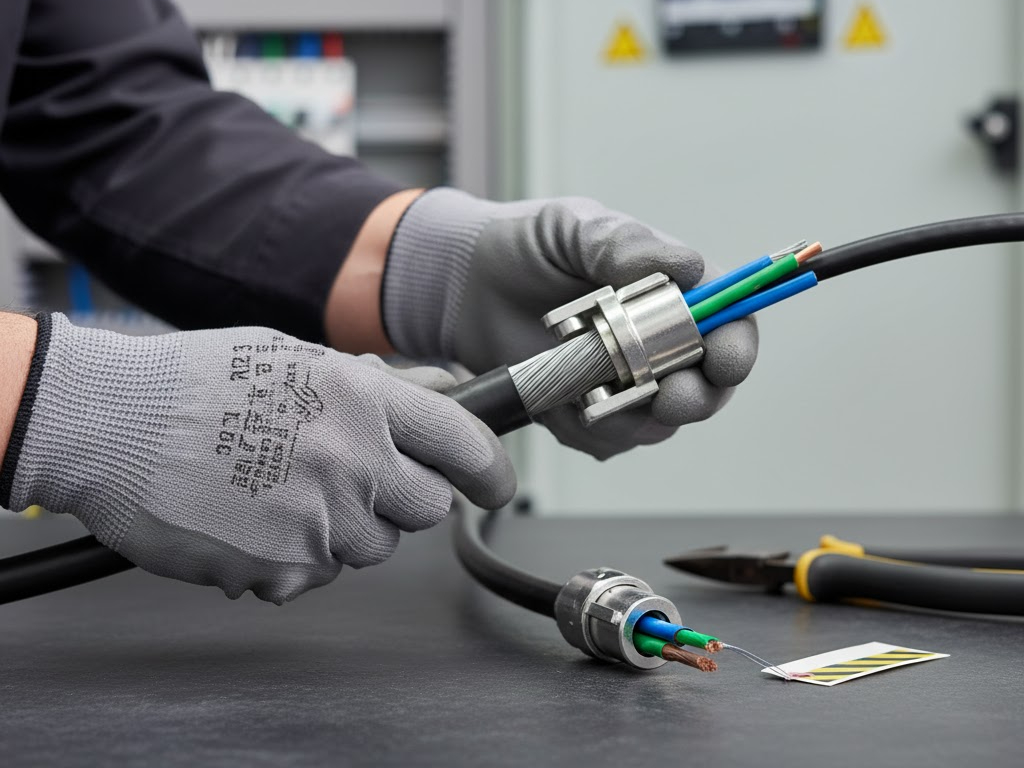When working with electrical installations, using the correct type of cable is crucial for safety and performance. CY cable is a popular choice in many industries due to its robust construction and durability. This guide will help you understand how to identify CY cable, provide useful usage tips, and share best practices to ensure your projects run smoothly and safely.
Table of Contents
- What is CY Cable?
- How to Identify CY Cable
- Common Uses of CY Cable
- Best Practices for CY Cable Installation
- Safety Considerations When Using CY Cable
- Frequently Asked Questions
- Conclusion
What is CY Cable?
CY cable is a type of electrical cable widely used in industrial and commercial wiring due to its robust construction and protective features. Specifically designed with an inner copper conductor, insulation, and an overall steel wire armour (SWA) layer, CY cable is well-suited for environments where mechanical protection and durability are essential.
The term “CY” refers to the cable’s characteristic: a copper conductor with a PVC insulated core, encased in galvanised steel wire armour. This steel armouring offers added protection against physical damage, making CY cable a reliable choice for underground, external, or high-risk installations.
Understanding the properties of CY cable is crucial for electricians and engineers aiming to ensure safe and efficient electrical systems.
How to Identify CY Cable
Knowing how to identify CY cable correctly is vital to avoid mistakes during installation or maintenance. Here are clear indicators to help you distinguish CY cable:
- Steel Wire Armour (SWA): The defining feature of CY cable is its steel wire armour. When stripped of the outer sheath, you will see a layer of spiral galvanised steel wires wrapped around the insulated cores.
- PVC Outer Sheath: CY cable typically has a black or coloured PVC outer sheath providing additional insulation and weather resistance.
- Markings on the Sheath: Look for printed markings on the cable’s sheath. Manufacturers usually label cables with the designation “CY” alongside voltage ratings and standards compliance (e.g., BS 6346, BS EN 50288).
- Number of Cores: CY cables come with varying numbers of insulated conductors, commonly 2, 3, or 4 cores, with a copper conductor inside each core.
- Weight and Rigidity: Due to the steel armour, CY cables feel heavier and more rigid compared to unarmoured cables.
If you’re ever uncertain, refer to detailed cable datasheets or seek advice from reputable suppliers like Batt Cables.
Common Uses of CY Cable

CY cable is ideal for several demanding applications, primarily where additional mechanical protection is necessary:
- Industrial Power Distribution: The steel wire armour protects against impact and abrasion, making CY cable suitable for factory and plant wiring.
- Underground Installations: CY cable withstands soil pressure and moisture ingress better than unarmoured cables, making it a preferred choice for direct burial.
- External and Outdoor Wiring: Exposure to weather and mechanical risks demands durable cables like CY cable.
- Construction Sites: Temporary and permanent power supplies in construction zones benefit from the toughness of CY cables.
In all these scenarios, using the correct cable type ensures compliance with electrical regulations and long-term reliability.
Best Practices for CY Cable Installation
To get the most out of your CY cable and maintain safety, follow these best practices:
- Use Suitable Glands and Connectors: CY cable requires armoured cable glands designed to secure the steel armour tightly, preventing strain on the conductors and ensuring effective earth continuity.
- Avoid Sharp Bends: Due to the steel wire armour, avoid tight bends that could damage the armouring or conductor insulation.
- Correct Cable Length and Cutting: Measure accurately and use appropriate cutting tools to prevent fraying of the steel armour.
- Secure Proper Earthing: The steel wire armour also serves as an earth conductor in many installations. Ensure it is correctly connected to the earth terminal to maintain safety.
- Follow Local Electrical Codes: Always adhere to BS 7671 wiring regulations or the relevant standards in your jurisdiction.
- Regular Inspection: Periodically check for any damage or corrosion, especially in outdoor or underground installations.
By adopting these practices, you protect your installation, enhance performance, and extend the lifespan of your CY cable.
Safety Considerations When Using CY Cable
Safety is paramount when working with electrical cables. Here are essential safety points related to CY cable:
- Mechanical Protection: CY cable’s steel wire armour offers excellent mechanical protection, but damage can still occur during handling or installation — inspect carefully before use.
- Moisture Resistance: Though the PVC sheath offers moisture protection, prolonged exposure to harsh chemicals or water ingress may cause deterioration. Use additional protective conduits if necessary.
- Avoid Overloading: Ensure that the cable’s current carrying capacity is not exceeded to prevent overheating.
- Qualified Installation: Always have CY cable installed or inspected by a certified electrician, especially in high-risk or commercial environments.
Maintaining these safety measures protects personnel and property while complying with regulations.
Frequently Asked Questions
1. How do I know if a cable is CY or another type?
Look for the steel wire armour layer beneath the outer sheath, and check for manufacturer markings indicating “CY”. The presence of galvanised steel wire is a clear identifier.
2. Can CY cable be used underground?
Yes, CY cable is designed for underground use due to its robust armouring and protective outer sheath, provided it complies with local standards.
3. Is CY cable suitable for outdoor installations?
Absolutely. The PVC sheath and steel wire armour protect it from environmental damage, making it ideal for outdoor wiring.
4. What is the difference between CY cable and other armoured cables?
CY cable specifically refers to copper conductors with PVC insulation and galvanised steel wire armour. Other armoured cables may use aluminium armour or different insulation types.
5. How should CY cable be terminated?
Use appropriate armoured cable glands that clamp onto the steel wire armour securely and ensure a reliable earth connection.
Conclusion
Correct identification and proper use of CY cable are vital for the success and safety of any electrical project. Following expert tips and best practices ensures your installations are durable, compliant, and reliable. Always prioritise safety and quality by using the right cable and accessories, and consult qualified professionals when in doubt. With the right approach, CY cable will provide long-lasting performance in a wide range of demanding environments.




